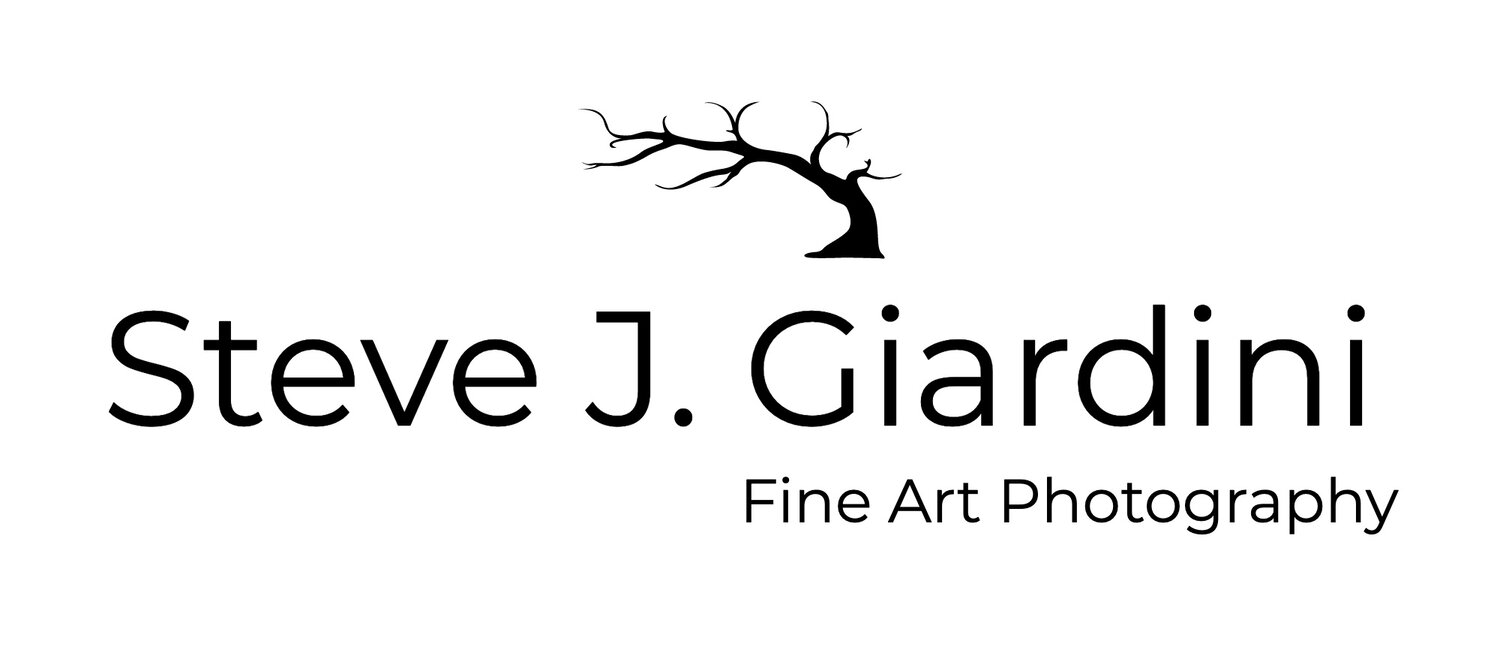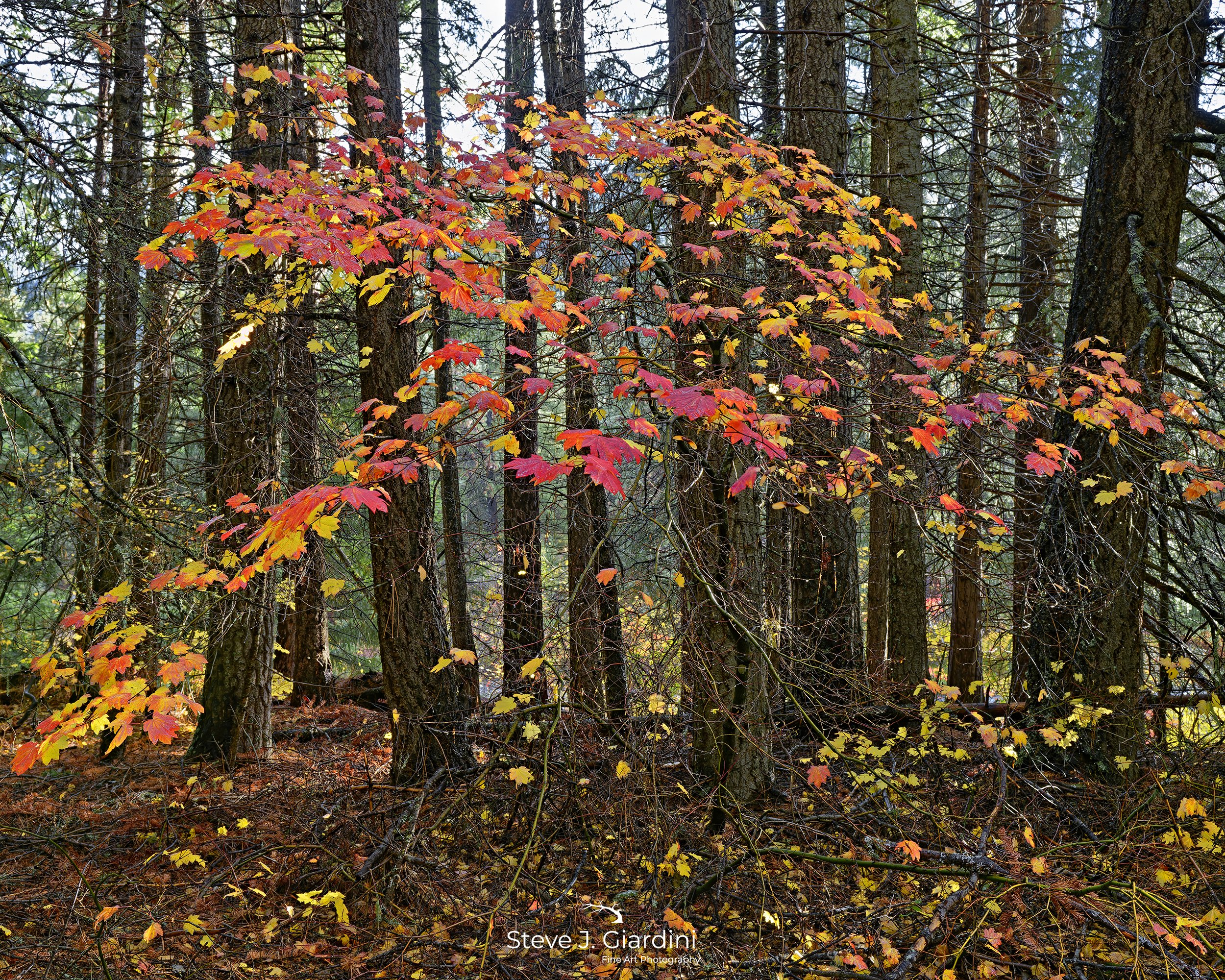Spotlighting
I crossed the bridge and it immediately caught my eye. It was partially obscured by old down and leaning snags. I step over wet logs, went under low hanging branches and wiggled my way through the thicket to stand in front of it. It was fantastic! It was just what I was looking for.
It was a bright, beautiful vine maple in full autumn color standing in the middle of a chaotic forest scene.
Weather conditions would create some practical challenges. A relentless light rain was falling and the air was damp and cold. On the plus side the overcast sky would extended the ‘good light’ capture period providing plenty of time to contemplate the best approach.
I was focused and began to recall the elements of FLOW, the optimal experience - a challenging activity that requires skill, merging action and awareness, a clear goal, full concentration on the task at hand, paradox of control (sense of complete control), the loss of self-consciousness (nothing else matters), and the transformation of time (time is no longer relevant).
Yellow Spotlight 22240NWND850C_5-4
The vine maple had already shed a good deal of leaves creating a great circle of yellow and orange at its base. Old reddish-orange pine needles and other forest jetsam made up the balance of the ground cover. The surrounding evergreen forest provided a perfect contrasting dark cyan-green backdrop. Dark straight branches stuck out from tall tree trunks giving the background an impenetrable feel. There was a small spot of gray sky visible but it was mostly screen by the upper benches of the tall trees.
This vine maple tree stood out like a forest beacon on this otherwise dark and glooming day. I knew others must have seen it but for the moment no one else was around and it had my full attention. I wanted to portray it in a photograph as a spotlight in the deep dark forest.
I walked around it looking for a perspective that would support the story. The vine maple needed to be front and center. I positioned it between the larger, darker background trees. I lined up the the downed tree trunks so that they were pointed (mostly) towards the maple. I included green ground cover in each of the lower corners as secondary points of interest. Most of the light was coming from behind me so I positioned the height and angle of the camera so that the largest of the wet vine maple leaves would be prominent in the frame.
Note to photo enthusiasts: The metadata and other technical notes about editing are at the bottom of this blog.
I took just five photographs with only slight composition and exposure settings variations. Pleased with the final frame I move on to look for other forest treasures.
Here are some other photographs taken about the same time in the same area. Each has a similar intention.
Thanks for taking the time to read the blog. I do appreciate your support and words of encouragement. If you enjoy reading my blog and my photographs, please take the time to tell others. Share my name and website. This is the best way for you to support my efforts.
Cheers
Steve
Learn to edit photos like a pro. Offering Adobe Lightroom and Photoshop photo editing sessions.
Photo Enthusiast Technical Section
Here’s some more details about the featured image, Yellow Spotlight 22240NWND850C.
Metadata
Camera: Nikon D850, 46 megapixel full frame,
Lens: Zeiss Milvus 18mm f/2.8,
Exposure: 0.6s, f/7.1, ISO 200,
Aspect Ratio & Format: 5:4 ratio (20” x 16”) in camera capture
Shutter Speed: There was very little wind. And while there was some leaf movement when rain hit them, the 0.6 second shutter speed was fast enough to stop any movement. I reviewed all images at 100% magnification in the field to be sure each was sharp.
Lens Choice: I choose the Zeiss Milvus 18mm f/2.8 lens because of its sharpness. I made sure I was flat to the horizon to prevent significant distortion like tree bending. Having said that, I did use DXO ViewPoint 3 to correct for a slight bending at all four corner of the frame (see editing below).
Aspect Ratio & Format: I haven’t moved completely away from the 3:2 (rectangular) ratio aspect but I am using 5:4 and 4:3 aspect ratios (more towards square) more these days. This image was taken as a 5:4 format in the field. It was not cropped to 5:4 during post processing.
Post File Editing: The editing workflow for this image was a follows:
File import using Bridge directly to a very detailed file folder structure,
Open files in DXO PhotoLab 6 (RAW editor equivalent to Adobe Camera RAW),
Triage & selected this image for its composition & sharpness,
Exported to DXO PureRAW 2 for automatic demosaicing, optical corrections for specific camera & lens, and denoising the file,
Import back to PhotoLab 6, virtual copy made,
RAW file global issues like exposure, color balance, etc. made in DXO PhotoLab 6,
Export as 16 bit TIFF file to Adobe Photoshop 2023,
A number of edits were made; global, regional & details i.e. mid-tone adjustments, increase yellows & reds, decreased cyan & greens, brighten leaves and added darken vignette,
Sent to Topaz Gigapixel AI to enhance detail & resolution and to resize image as print file,
Saved to portfolio folder.




